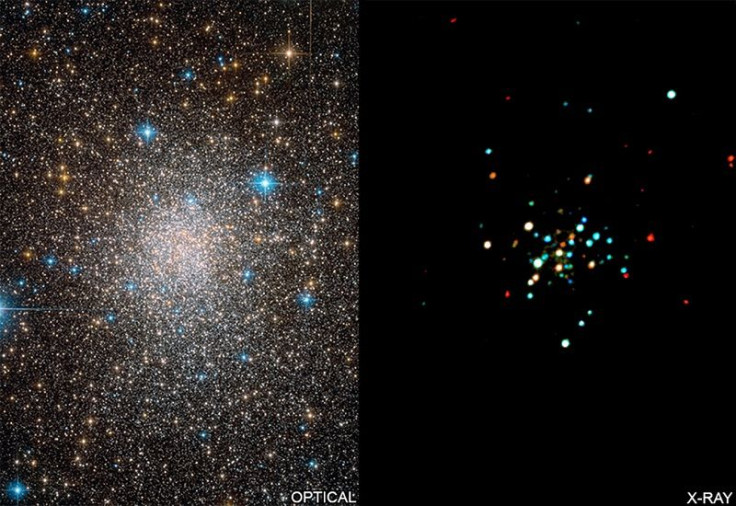Jekyll And Hyde: Double Star System Switching Between Two Alter Egos
KEY POINTS
- Binary system Terzan 5 CX1 is switching between two 'alter egos'
- Typically, the change happens over the course of billions of years
- Terzan 5 CX1 has been switching identities in the span of just a few years
Scientists observed a double star system, or a binary system, that seems to be switching between two alter egos rather like Dr. Jekyll and Mr. Hyde. Based on over a decade of data, researchers observed that the binary system switched its identity and then returned to its original state again after a few years.
Binary System Evolution
In binary systems like Terzan 5 CX1, the pair system is made up of a star similar to our Sun and a neutron star or the extremely dense remnant of a supernova explosion. In such systems, the heavier neutron star pulls material from its lower-mass Sun-like companion into a surrounding disk. Astronomers call the accretion disks that form as a result of this interaction as low-mass X-ray binaries.
The spinning material in the disk then falls to the surface of the neutron star, thereby increasing its rotation rate until it is spinning hundreds of times per second.
“Eventually, the transfer of matter slows down and the remaining material is swept away by the whirling magnetic field of the neutron star, which becomes a millisecond pulsar,” NASA explains.

According to scientists, the transformation from a low-mass binary into a millisecond pulsar typically takes several billion years but, evidently, there can also be a period when the binary switches between the two states rapidly. Such is the case of binary system Terzan 5 CX1.
Cosmic Jekyll And Hyde
In Chandra X-ray observations of Terzan CX1 in 2003, it was acting like a low-mass binary. By 2009 to 2014, Chandra data showed that Terzan CX1 was already 10 times fainter and, observations implied that the binary was already behaving like a millisecond pulsar. However, Chandra observations made in 2016 showed that Terzan CX1 became brighter and was even behaving like a low-mass X-ray binary again.
“To confirm this pattern of “Jekyll and Hyde” behavior, astronomers need to detect radio pulses while Terzan 5 CX1 is faint in X-rays,” NASA said. “More radio and X-ray observations are planned to search for this behavior, along with sensitive searches for pulses in existing data.”
According to NASA, Terzan 5 CX1 is a rare example of this kind of changing behavior in a binary system. So far, only three other Jekyll and Hyde systems have been confirmed.
© Copyright IBTimes 2024. All rights reserved.












